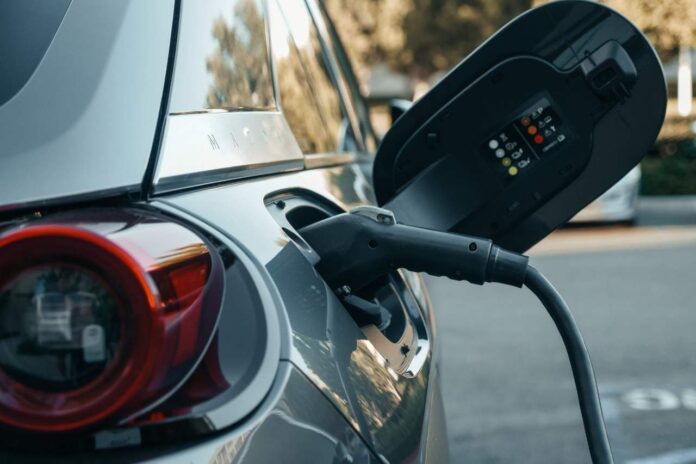Is supercharging bad for Tesla? This guide will discuss the alternative options available. The topic of charging is one of the most frequently debated in the world of electric automobiles. It doesn’t matter if there are issues with home charging configurations, charging rates, suggested charging levels, or the usage and accessibility of community charging stations.
A present or future owner of an electric vehicle will frequently bring up the subject. Although Tesla and electric vehicles (EVs) are growing in popularity, they will only make up 1.5% of US purchases in 2021. The main concerns individuals have when thinking about EVs are charging and mobility. Tesla suggests that you recharge at home every day. However, they have America’s most significant Supercharge Infrastructure.
Quick Summary: Lithium-ion batteries deteriorate if used in extremely hot or chilly charging circumstances. Utilizing a non-Tesla Supercharger would harm your battery because the Tesla has a designed Advanced Thermal Managing structure.
Read more about the best options for various circumstances.
Let’s examine what supercharging entails first. Tesla Supercharging employs 480V DC quick charging technology, which is highly effective. Just six chargers were accessible when they initially launched the system in 2012. By 2022, a whopping 30,000+ chargers will be installed internationally, with the US hosting the vast bulk of them. With the aid of a supercharger, you can give your vehicle a 200-mile recharge in just 15 mins.
As a result of the US’s extensive Supercharger Infrastructure. The petrol cost is no longer an issue, and your travel options are virtually endless. What occurs if you use a Supercharger to recharge your Tesla? Will the battery suffer any harm as a result? Let us answer “is supercharging bad for Tesla”?
Is Supercharging Bad For Tesla?
When we discuss battery deterioration, we genuinely mean battery depreciation or a reduction in the battery’s capability to retain a charge. Tesla advises charging your vehicle daily at home, ideally with a TWC utilizing 240V. They advise you not to let your charge drop under 5% or beyond 90%.
So why did Tesla establish such an extensive Supercharger Infrastructure if Tesla promotes household charging? They don’t desire any operator to be constrained to their physical vicinity, and they wish you to be able to move around easily without experiencing stress. The Supercharging System works just great while you’re traveling.
What To Do If TWC is Not Available To Charge Your Tesla?
What happens, though, if there isn’t a TWC charger available at home? Many Tesla consumers rent their homes or live in apartments without accessibility to a TWC or any other type of plug-in connection. Either a Supercharger or a Target Charger is available. They intend to utilize the one that’s nearest and most useful based on where they are.
Suppose you frequently require the use of a supercharger. In that case, you may modify your application to ensure that it merely charges 80%, which will safeguard your battery. To avoid long lines from forming, Tesla switched the Superchargers in crowded places to charge to 80%. The truth is that you won’t have to stand in line very often.
Charging Time
The longer your Supercharge takes, the older your Tesla might be. It happens because the internal processors are continually monitoring the batteries. The more frequently you Supercharge your battery, the longer it might take to attain the critical 80% mark. And the less range you’ll get out of it compared to when your Tesla was brand-new. Your battery might lose 1.9% of its capacity after 10,000 miles of use.
Note: According to a recent Tesla policy update, the battery must maintain 70% of its capacity throughout the 8-year guarantee. Or else any dead cells will get replaced. Therefore, you’ll never operate at less than 70% of capacity.
Like other batteries, it will eventually lose capacity. Several of the cells would run out of energy and won’t be capable of being charged at all or only partially. Your Li-Ion battery gets charged more since a Supercharger utilizes a significantly higher voltage.
Advanced Thermal Managing, a tracking system used in Tesla automobiles. Keeps an eye on your cells to ensure they don’t overheat, resulting in an early loss of battery capacity. Some disorders, though, cannot be cured but may be managed.
Related: Can You Charge A Tesla In The Rain?
When to Avoid Using Supercharger on a Tesla?
You shouldn’t supercharge your vehicle under the following two circumstances:
Extreme Climate
Extremely cold or scorching temperatures get not intended for use with lithium-ion batteries. If the temperature rises beyond 100F in a hot region, your Tesla will immediately turn to the AC while charging. It would require longer to charge since it must keep the Li-ion battery at a specific temperature while the AC operates.
Utilizing a Supercharger in extreme temperatures would not help your battery because the 480V DC charger currently produces more heat than usual. Using the AC to offset this might stress the cells.
Extreme cold charging might also be harmful. Before charging, Tesla’s preconditioning system heats the vehicle. The onboard computer may restrict or forbid charging if you attempt to charge close to freezing conditions to avoid harm. Ionizing fluid, which may freeze, is found in lithium-ion batteries.
If it happens and you apply electricity, particularly 480V current, the battery may get killed. Therefore, preconditioning is crucial, especially if you’re supercharging in cold locations.
Non-Tesla Superchargers
They are bad for your battery since they might not have an ATM because they are not Tesla chargers. Extended usage can scorch your lithium-ion battery, leading to deterioration and reduced battery life.
Bottom Line
The ability to save money on petrol is an EV’s main marketing feature. The proper handling of your Tesla battery is a matter of much discussion. However, in practice, your internal systems would take control of your battery if you utilize a Tesla Supercharger. Follow Tesla’s advice as closely as you can. Charge mainly at the house; if that’s not possible, use a Tesla Supercharger alternatively.
Related Articles:




